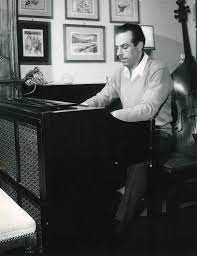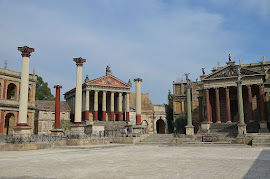Johann Maria Farina - perfumier
Emigrant to Germany who invented Eau de Cologne
Johann Maria Farina, the Italian perfumier said to have created the world’s first Eau de Cologne, was born on this day in 1685 in the small town of Santa Maria Maggiore in Piedmont. Farina’s family were masters in the art of distilling alcohol to carry fragrances, which involves different techniques to those used to distil alcohol to drink. The method was developed in northern Africa, exported to Sicily and then on to the Italian mainland. Farina’s antecedents brought it with them to Piedmont, where his grandmother established the family workshop in Santa Maria Maggiore, which is located about 130km (81 miles) northeast of Turin, not far from the border with Switzerland. In his early 20s, Farina emigrated to Germany. Taking the name Johann Maria Farina - his given Italian name was Giovanni - he initially worked for an uncle who had moved to Cologne (Köln) some years earlier. Feeling homesick, Farina began to dabble in experiments using the distilling techniques he had inherited. One day in 1708 he excitedly wrote a letter to his brother, Giovanni Battista Farina, exclaiming that he had produced a scent so pleasing to his nostrils that it was almost dreamlike in its qualities. Read more…
________________________________________________________
Marcello Piacentini – architect
Designer whose buildings symbolised Fascist ideals
Urban theorist and architect Marcello Piacentini was born on this day in 1881 in Rome. The son of architect Pio Piacentini, he studied arts and engineering in Rome before going on to become one of the main proponents of the stark, linear designs characteristic of the Fascist era. When he was just 26, he was commissioned with redesigning the centre of the Lombardy city Bergamo’s lower town, the Città Bassa, where Piacentini's buildings remain notable landmarks today. The project marked Piacentini as an architect of considerable vision and talent. He then went on to work throughout Italy, and in particular in Rome, for the Fascist government. He designed a new campus for the University of Rome, La Sapienza, the road approaching St Peter’s in Rome that was named Via della Conciliazione, and much of the EUR district of the capital, of which he was not only the architect but, by appointment to the Fascist leader, Benito Mussolini, the High Commissar. Characteristic of all these projects was Piacentini's simplified neoclassicism, which became the mainstay of Fascist architecture. Read more…
_________________________________________________________
Mario Minniti - painter
Sicilian influenced by long-time collaborator Caravaggio
The painter Mario Minniti, who has acquired some historical notoriety over his long association with the brilliant but hot-tempered Renaissance great Caravaggio but went on to enjoy a successful career in his own right, was born on this day in 1577 in Syracuse, Sicily. Minniti first encountered Caravaggio - born Michelangelo Merisi - when he arrived in Rome at the age of 15, seeking an apprenticeship following the death of his father. Caravaggio was just a few years older than Minniti. They became friends and Minniti, who was blessed with boyish good looks, is thought to have been the model Caravaggio used in a series of works commissioned by Cardinal Francesco Maria del Monte, one of the leading connoisseurs in Rome. These included his paintings Boy with a Basket of Fruit, The Fortune Teller, The Musicians, Bacchus and The Lute Player. As well as learning Caravaggio’s style and techniques, whose influence shone through in many of his own works, Minniti became close friends with his mentor, with some historians buying into the theory that they were lovers and that Caravaggio was obsessed with his young model’s beauty. Read more…
_________________________________________________________
Feast of the Immaculate Conception
Prayers are followed by bonfires and feasting
The Feast of the Immaculate Conception is celebrated on this day throughout Italy every year. It is a public holiday everywhere, when banks and offices are closed, special masses take place in the churches and people celebrate the start of Christmas. It is an official festa in the Christian calendar, when the immaculate conception of Jesus is celebrated. The day commemorates Mary, the mother of Jesus, being given the grace of God to live a life ‘free of sin.’ Many people attend Mass and the Pope leads the celebrations from Rome. The day was officially declared a festa by the Vatican in 1854. It marks the official start of the Christmas season in Italy, when the lights and trimmings go up. The shops are open and do a brisk trade, with many people not at work taking the opportunity to do some Christmas shopping. Bonfires are lit in some parts of Italy and the different areas celebrate with their own traditional food and wine. Read more…
__________________________________________________________
Arnaldo Forlani - politician
Oldest surviving former prime minister
Italy’s oldest surviving prime minister, Arnaldo Forlani, was born on this day in 1925 in Pesaro. A Christian Democrat for the whole of his active political career, Forlani was President of the Council of Ministers - the official title of the Italian prime minister - for just over eight months, between October 1980 and June 1981. He later served as deputy prime minister (1983-87) in a coalition led by the Italian Socialist Party leader Bettino Craxi, having previously been defence minister under Aldo Moro (1974-76) and foreign affairs minister under Giulio Andreotti (1976-79). Forlani represented Ancona in the Chamber of Deputies from his election in 1958 until the party collapsed in 1994 in the wake of the mani pulite corruption investigations. He was premier during a difficult period for Italy, which was still reeling from the terrorist attack on Bologna railway station and the decade or so of social and political turmoil known as the Years of Lead. Barely a month into his term, Forlani was confronted with the devastation of the Irpinia earthquake in Campania, which left almost 2,500 people dead, a further 7,700 injured and 250,000 homeless. Read more…

















